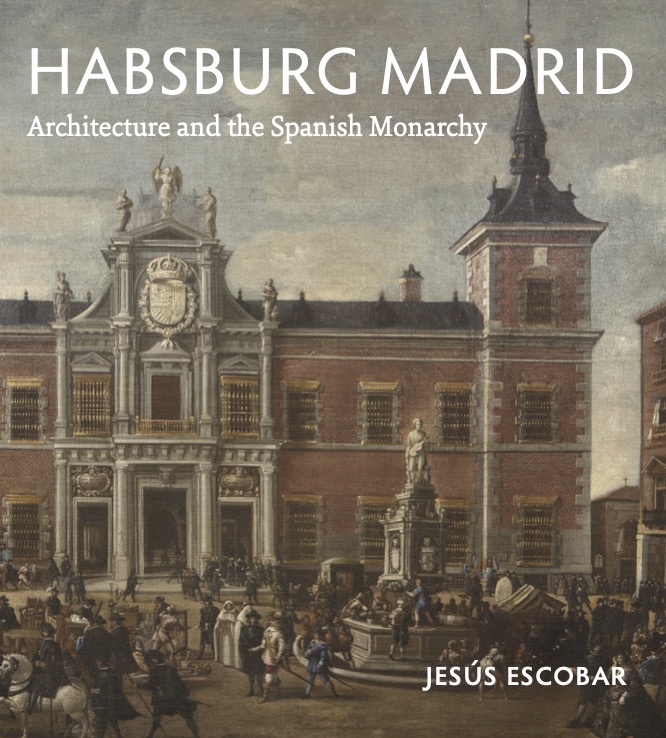Jesús Escobar
Professor; Director of Undergraduate Studies
Curriculum Vitae

- j-escobar@northwestern.edu
- Kresge 4321
- Office Hours: Wednesdays, 3–4pm, and Thursdays, 3:30–4:30pm
Jesús Escobar arrived at Northwestern in 2008 and chaired the Department of Art History for seven years between 2010 and 2018. He is a scholar of art, architecture, and urbanism in early modern Spain and the larger Spanish Habsburg world. His 2022 book, Habsburg Madrid: Architecture and the Spanish Monarchy (Penn State University Press), examines government buildings and public spaces built and shaped in the Spanish capital between 1620 and 1700 from local, regional, and global vantage points. It won the 2023 Eleanor Tufts Award from the Society for Iberian Global Art. The book complements The Plaza Mayor and the Shaping of Baroque Madrid (Cambridge University Press, 2003; paperback, 2009), Escobar’s exploration of the political and spatial evolution of Madrid from a secondary city of Castile to the seat of a global empire in the late sixteenth and early seventeenth centuries. The first book won the 2004 Eleanor Tufts Award and was published in a Spanish-language edition in 2008 by Editorial Nerea. Currently, he is at work on a study of prominent seventeenth-century Americans and their experiences with architecture in Latin America and Europe. With Michael Schreffler of the University of Notre Dame, he is also writing Architecture of the Spanish World, 1500 to 1800, a book under contract with Princeton University Press.
Professor Escobar is Editor of the scholarly book series, Buildings, Landscapes, and Societies, published by Penn State University Press. He is also Treasurer of the National Committee for the History of Art and an active participant in several professional societies. His research has been supported by grants from the Fulbright Program, the National Endowment for the Humanities, and the Center for Advanced Study in the Visual Arts at the National Gallery of Art in Washington, D.C.
In Fall 2023, Professor Escobar was a Fellow at the Clark Art Institute in Williamstown, Massachusetts. Upon returning to Evanston, he will teach Baroque Art: Italy & Spain in Winter 2024 and Introduction to Latin American Art in Spring 2024 while also guiding the Senior Thesis Colloquium. Professor Escobar welcomes applications from prospective graduate students interested in architecture, urbanism, and cartography in early modern Spain and its transatlantic empire, as well as the study of architectural and artistic exchange across the Spanish Habsburg world.
Program Area: Architecture and Urbanism, Early Modern
Regional Specialization: Europe, Latin America and the Caribbean
Regional Interests: Architecture and urbanism in the early modern Spanish Empire; Baroque art and visual culture; early modern cartography; art and empire
Selected Publications

Jesús Escobar. Habsburg Madrid: Architecture and the Spanish Monarchy. University Park: Pennsylvania State University Press, 2022. Winner of the 2023 Eleanor Tufts Award
Jesús Escobar. “Enlightenment Erasure: The Lost Seventeenth Century in Spanish Architectural History.” Hispanic Research Journal 23, no. 5 (2022): 430–451.
Jesús Escobar and Michael Schreffler. “Transatlantic Renaissance and Baroque Architecture in Spain and Latin America.” In The Cambridge Guide to the Architecture of Christianity, edited by Richard Etlin, vol. 2, 799–816. Cambridge: Cambridge University Press, 2022.
Jesús Escobar. “Architecture, Race, and Labor in the Early Modern Spanish World.” Contribution to “Constructing Race and Architecture, 1400–1800,” Journal of the Society of Architectural Historians 80/3 (2021): 268–269.
Jesús Escobar. “Philip II and El Escorial.” In Oxford Bibliographies in Art History. Ed. Thomas DaCosta Kaufmann. New York: Oxford University Press, 27 June 2017.
Jesús Escobar, "Architecture in the Age of the Spanish Habsburgs," Journal of the Society of Architectural Historians 75/3 (2016): 258-262.
Jesús Escobar, "Map as Tapestry: Science and Art in Pedro Teixeira's 1656 Representation of Madrid," Art Bulletin 96/1 (2014): 50-69.
